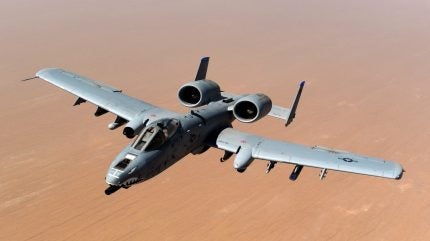
The US Air Force (USAF) is targeting to complete a phased withdrawal of its 24 A-10 Thunderbolt II aircraft by the end of next year at Osan Air Base in South Korea.
This is part of the Air Force’s aim to complete a phase of its modernisation strategy in fiscal year 2025 (FY 2025). It includes prioritising fourth-generation fighter jet upgrades and enhancing the integration of fourth- and fifth-generation aircraft.
Weighing 29,000lb, the A-10 aircraft features a 30mm GAU-8/A seven-barrel Gatling gun and can carry up to 16,000lb of mixed ordnance on eight under-wing and three under-fuselage pylon stations.
The modernisation effort aims to ensure peace and stability in the Indo-Pacific region, including the Korean peninsula, through enhanced air capabilities.
This strategy bolsters deterrence against North Korea and reaffirms the US security commitment to the South Korea-US alliance by strengthening combined defence capabilities.
Throughout this transition, the US Air Force will continue to enhance interoperability through close cooperation with the Republic of Korea Air Force.
The 25th Fighter Squadron at Osan Air Base will begin a phased withdrawal of its 24 A-10 aircraft starting in January 2025, with completion anticipated by the end of FY 2025.
Additionally, Seventh Air Force F-16s are undergoing avionics system upgrades, bringing the aircraft closer to fifth-generation standards.
These upgrades will increase both the survivability and accuracy of the weapon system, marking a shift towards integrating next-generation aircraft for greater operational effectiveness.
The upgraded F-16s will continue to provide reliable and flexible combat capabilities while the F-35 will provide an advantage in situational awareness and strike precision with its advanced sensors.
The F-15EX will further strengthen air-to-air and air-to-ground combat effectiveness with its advanced avionics and payload capacity.
US Forces Korea deputy commander and Seventh Air Force commander David Iverson said: “By introducing advanced fourth and fifth-generation aircraft like our upgraded F-16 Fighting Falcons, along with F-35 Lightning IIs and F-15EX Eagle IIs in the Pacific region, we are significantly enhancing our overall air combat capabilities in the Korean theatre.”


